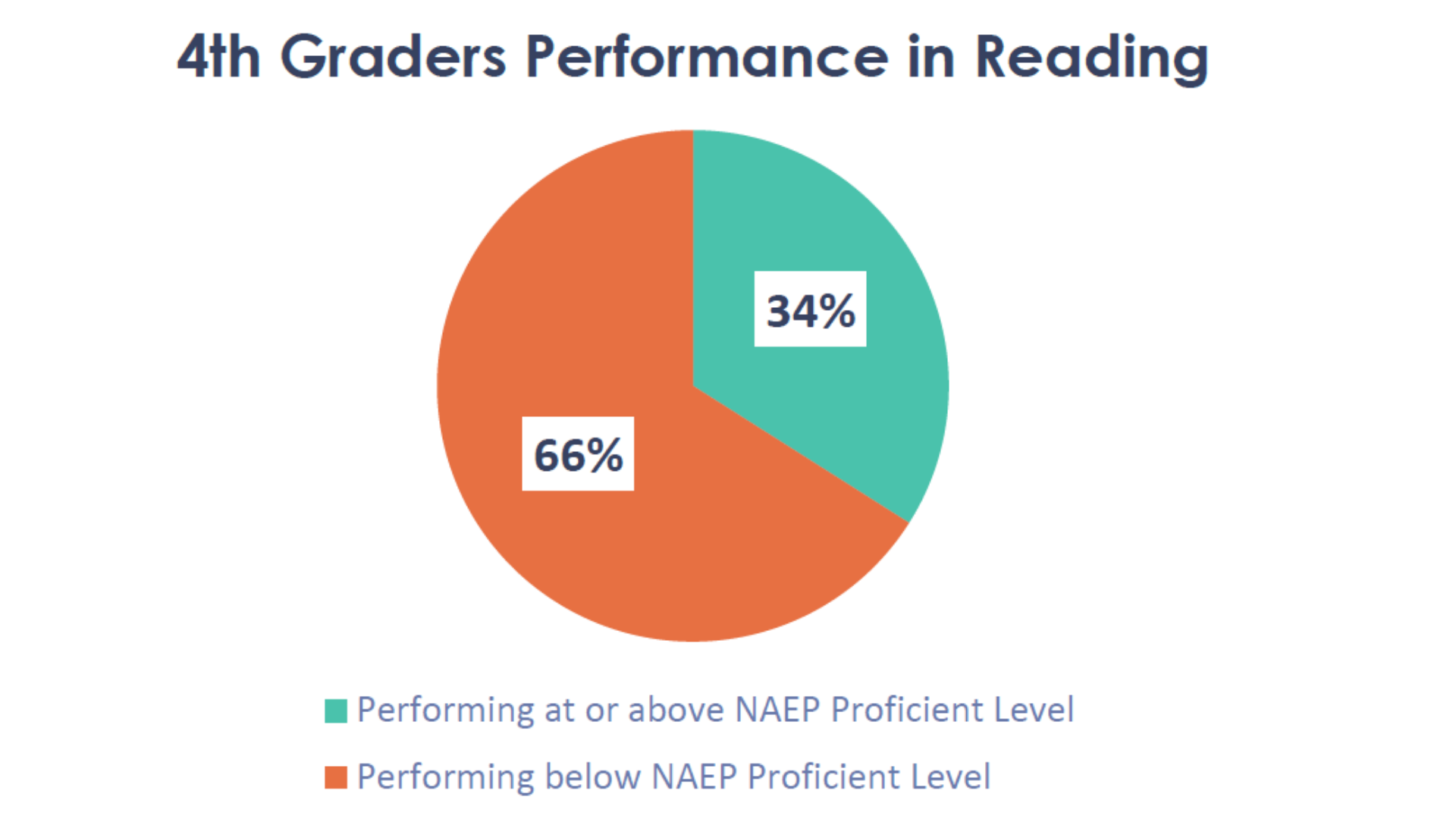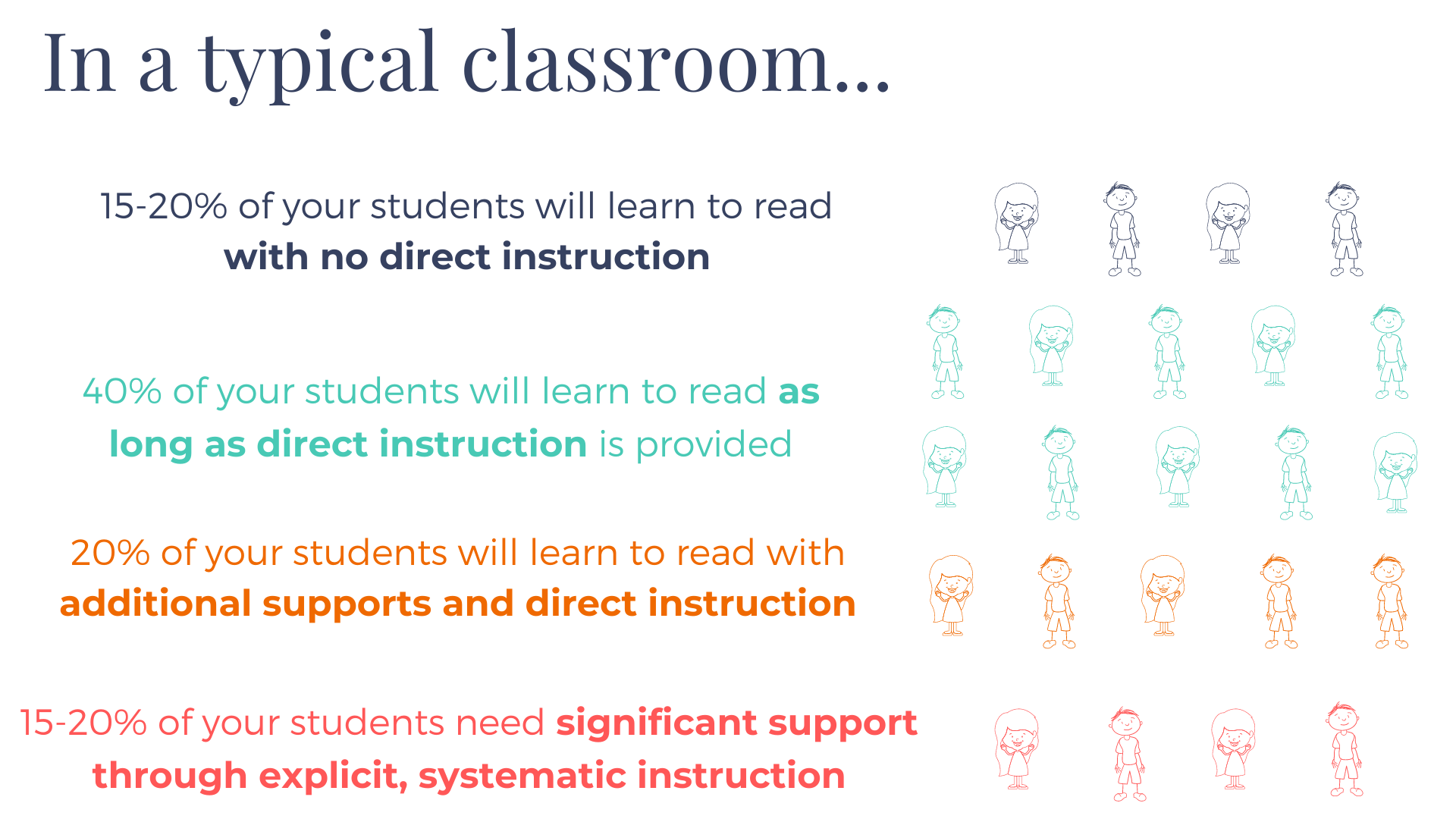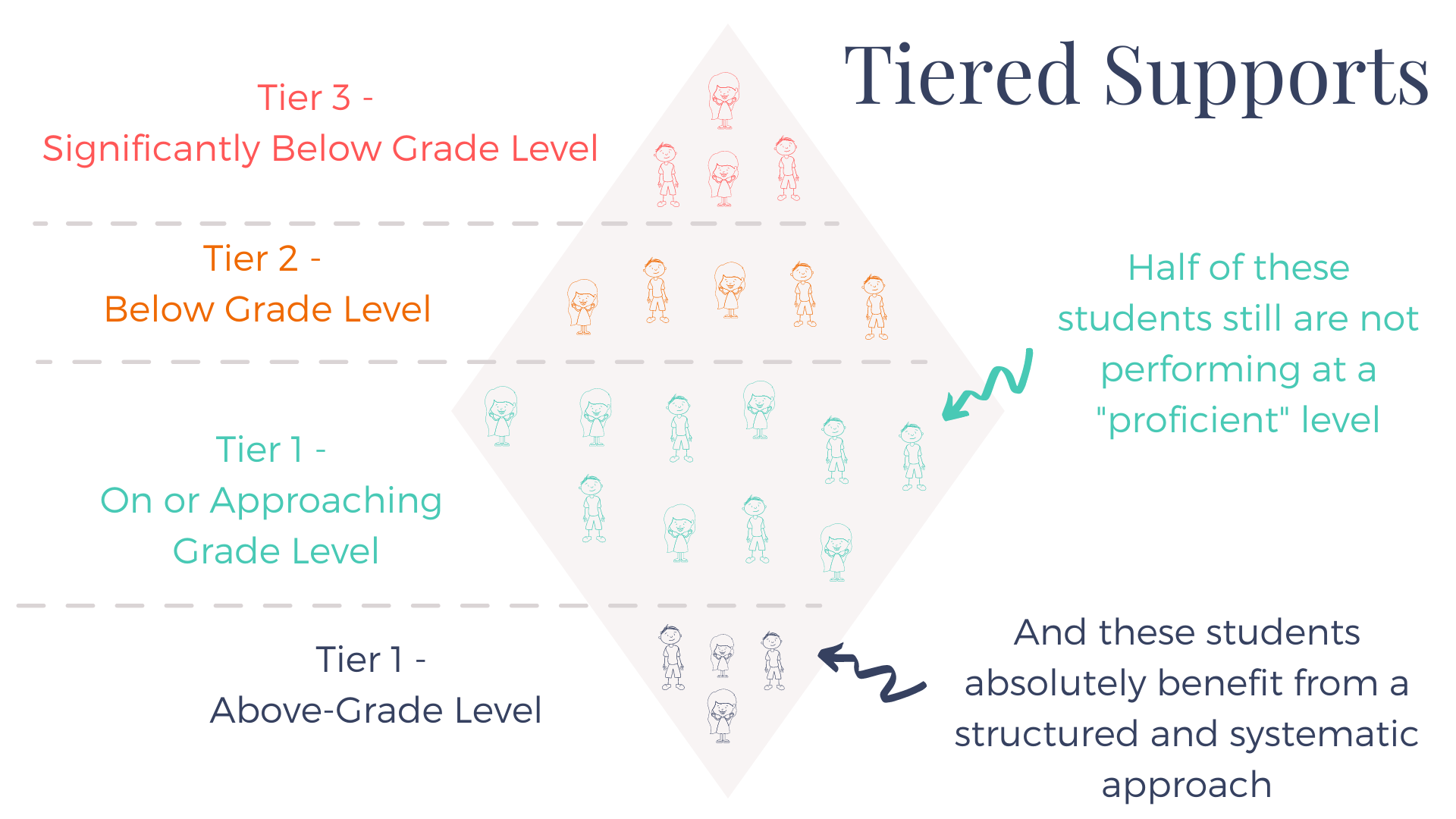How Many Students are Actually Reading Below Grade Level?!
Hey there friends!
Today was one of those days, the kind of day where we get all fired about something. If you know us well at this point, you know that we do this often! If you’ve ever been to one of our webinars or online trainings - you’ve heard us mention that we’re not yelling, we’re just really passionate about this.
We were discussing statistics…
and if you know us well you know we LOVE statistics and data (if you‘re a data nerd too, you can sit with us - and if you’re not, that’s all good too because we’ve got you covered!!!)
We were reviewing the statistics that were pushed out by the US Department of Education in 2019 reviewing the National Report Card as it pertains to students and their ability to read at a proficient level by the time they are in the 4th grade.
And if you know these studies, the statistics are shocking.
66% of students in the United States are not reading at a proficient level.
Come again?
Two-thirds of our students aren’t reading at grade level?
U.S. Department of Education, Institute of Education Sciences, National Center for Education Statistics, National Assessment of Educational Progress (NAEP), 2019 Reading Assessment.YIKES!
And here’s the deal - when we think about this number we can start to break it down and see how this could happen.
Let’s think about a general education classroom…
So based on these statistics, we know that we’ve got about 40% of students who could benefit from additional support and could foreseeably score “below proficient” on a measure of reading performance (the red and orange students) who would typically fall into what we call Tier 2 or Tier 3 instruction.
But…these statistics are showing us something even more concerning.
These statistics show us that over HALF of the students who should be learning to read with any direct instruction are still not reading at a proficient level.
So let’s think about this -
NOT ONLY are students who are identified as needing extra support struggling to read effectively, but HALF of the students who are not receiving any additional help are ALSO struggling to read.
So what this tells us is that we ABSOLUTELY must be implementing frameworks, systems, and strategies that align with the science of reading. If you’re new to the idea of evidence-based or research-based reading instruction and you’re looking for more information about structured literacy intervention and what the research actually supports, then grab our Science of Reading Blueprint. This blueprint will help you understand the 3 key scientific models that drive effective literacy instruction, learn how to integrate the research into practice, and provide simple checklists that will help you weave the science of reading into your instruction.
But what we also CANNOT fail to recognize is that students may be struggling to read proficiently for a number of different reasons.
Some may struggle with decoding (sounding out the words) and others may struggle with vocabulary or comprehension, and some students struggle with decoding, vocabulary, and comprehension!
We cannot assume that just because we know students are struggling, that we know how to solve the issue. We must begin diving in and thinking critically about our student profiles and how we can support ALL struggling readers.
The best way to know where our students are is to have solid measures we can use to assess our students and know what is causing their lack of proficiency in reading.
Is it phonological awareness knowledge? Phonics knowledge? Vocabulary? Comprehension? We MUST begin here so that we can start changing the trajectory of our struggling readers!
So let’s commit to starting by looking at where our students are at and where those breakdowns are occurring and from there we can begin designing a plan that’s going to get these students to grade-level proficiency!
Alright so, phew there it is - like I said, our team meetings can get a little intense when we start thinking about these things. We’re not yelling, we’re just passionate, and we know you are too - because you’re here reading this blog and doing everything you can to support your students. We’re grateful for you and know that together we can start making progress to flip this trajectory for struggling students.




